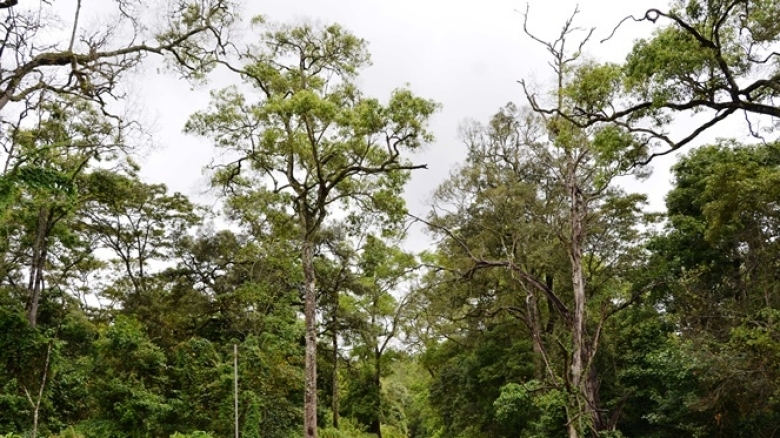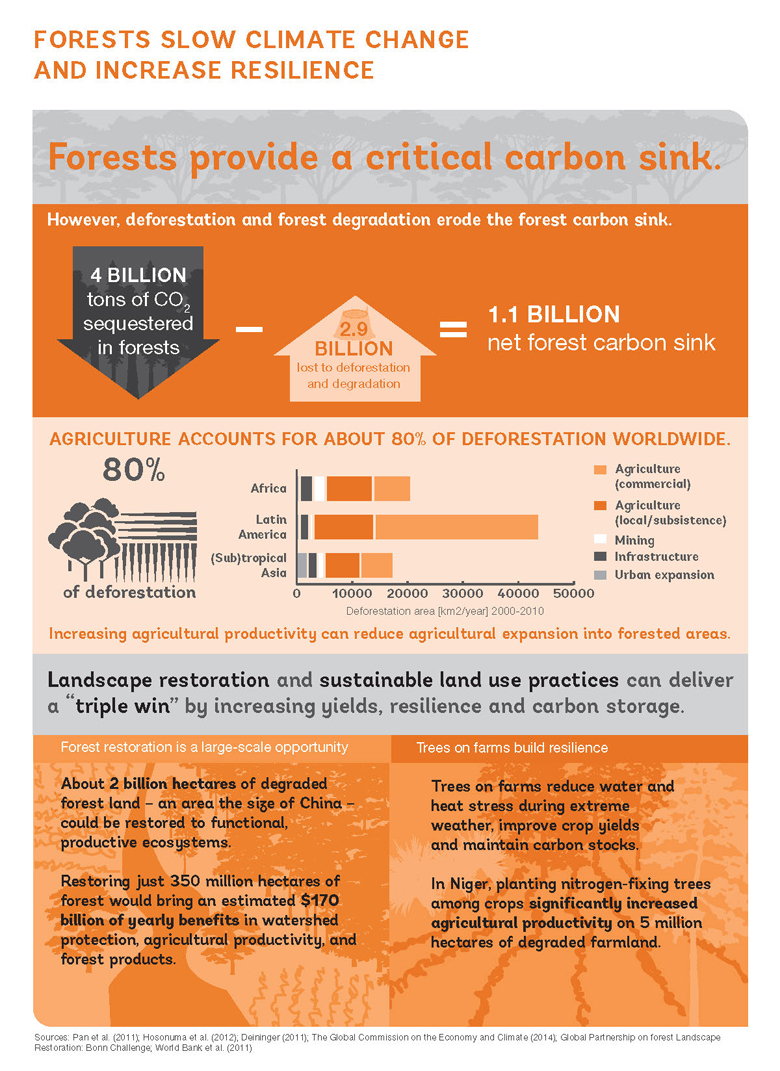The World Bank Group has been protecting and investing in forest landscapes for many years through a number of initiatives, providing fresh sources of financing for the sustainable use of forest resources, from both public and private partners, focused on conservation, sustainable land use and greenhouse gas emission reductions at scale. These efforts support policy reforms and objectives that help countries move towards low carbon development while helping to provide sustainable, climate-resilient incomes to those who depend on the forests for their livelihoods.
Given that emissions from land use contribute significantly to climate change, many countries have been particularly focused on changes they can make in the land sector, which encompasses agriculture and forestry, as an important part of their approach to mitigating climate change. A number of developed and developing nations are giving attention to forests’ potential for emission reductions in their proposed Intended Nationally Determined Contributions, or climate action plans, both through reduced deforestation and by enhancing carbon stocks, for example through plantations and sustainable forest management.
In side events on December 4 at COP21 in Paris, three African countries that are working with the World Bank Group will showcase examples of how REDD+ has helped establish the building blocks they need to conserve forests and support green economic growth.
The government of Mozambique will present the Zambezia Integrated Landscape Management Program. This area covers 3.8 million hectares and includes 2.3 million hectares of forest area and some of the largest and most well-preserved tracks of miombo forests in East Africa. The program will establish 5,000 hectares of sustainable farming which leads to increased revenues for producers each year because the cashew and sesame crops grown there can fetch a higher price at markets. A new cashew processing unit, established in partnership with the private sector, means more local jobs. Community mapping efforts and registration of farmers and land dwellers promotes better forest management at the local level.
Representatives from Ethiopia will present the recently launched Oromia Forested Landscape Program. The 10-year initiative seeks to reduce deforestation and greenhouse gas emissions from land use in all of the forested areas in the regional state of Oromia through an integrated landscape approach that addresses trade-offs and synergies among forest, crop, livestock, water, and household energy needs. This work in Oromia also includes payments for ecosystem services, a system in which farmers or landowners are offered incentives to manage their lands in ways that provide an ecological service, such as climate regulation, fresh water or cleaner air.
In the Republic of Congo, the government is building public-private partnerships with companies that produce, trade or buy forest commodities. The global agri-business Olam has partnered with the government to make cocoa farming more forest friendly through initiatives such as intensification of shade grown cocoa production with communities in degraded forests to avoid slash-and-burn practices in the primary forest.
These are just three of a growing number of examples of countries that are trying to better manage and protect forest resources. Earlier this week at COP21, Germany, Norway and the United Kingdom of Great Britain and Northern Ireland released a statement in which they pledge $339M to support “circa five new large-scale emissions reductions programs under the Forest Carbon Partnership Facility Carbon Fund.” In addition, representatives from Côte d’Ivoire, Democratic Republic of Congo, and Liberia, along with indigenous peoples’ representatives, also showcased innovative initiatives and partnerships at the country level that are making forests and their protection a core element of economic growth and sustainable development.
The World Bank Group has been partnering with many of these forest countries to provide technical and financial assistance to get ready for REDD+, to test ways to best sustain livelihoods of local communities and to conserve biodiversity, and to share the knowledge and lessons learned from this process.



